
Our focus today is on the 2/4 pipe march Lord Alexander Kennedy. Now more popular with bands than soloists, it is nevertheless a classic of the genre.
‘Lord Alex’ lends itself to innovation and re-write, and many versions of the tune have appeared and been performed over the years. What I’m presenting today, however, is a copy of the original tune as written by the composer, James Honeyman, and passed on to his pupil James Russell, Larbert.
It came to me along with a letter from the late piper and judge, Walter Drysdale. The letter reads: ‘Hello Robert, During my day at the Royal Scottish Pipers Society one of the things we got talking about was Lord Alexander Kennedy, one of my favourite marches when I was young going round the games circuit.
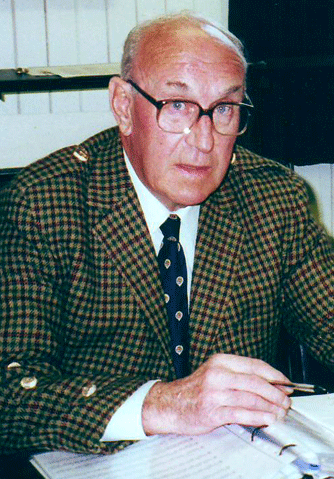
‘To the best of my knowledge, the only other player I heard competing with it at that time was the one and only John D. Burgess [Listen to John D. playing the tune here]. The style he played was different from the way I got it from James Russell, one of my tutors from Larbert in Stirlingshire.
‘He was a reedmaker and was taught by James Honeyman from Falkirk who composed Lord Alexander Kennedy. I played it the original way Honeyman wrote it – quite a bit different from the way we hear it now, a second time in every part.
‘I enclose a copy for your perusal. Incidentally, this is a copy from a hand written book from Robert Shepherd’s office [P/M RT Shepherd, World Championship-winning pipe major of Dysart & Dundonald Pipe Band]. Robert was also a pupil of James Russell and later became a pupil of mine, and I also helped him along with his reedmaking.
‘Unfortunately when I went up north to work on the hydro schemes he slipped through the net and was another good solo player lost to bands. I’m sure there must be a good few players still in the central belt who will remember this style of the tune.
‘After we talked about MacSwan of Roaig and the run-down Robert Reid style, I am back playing it that way again. All the best, Walter.’
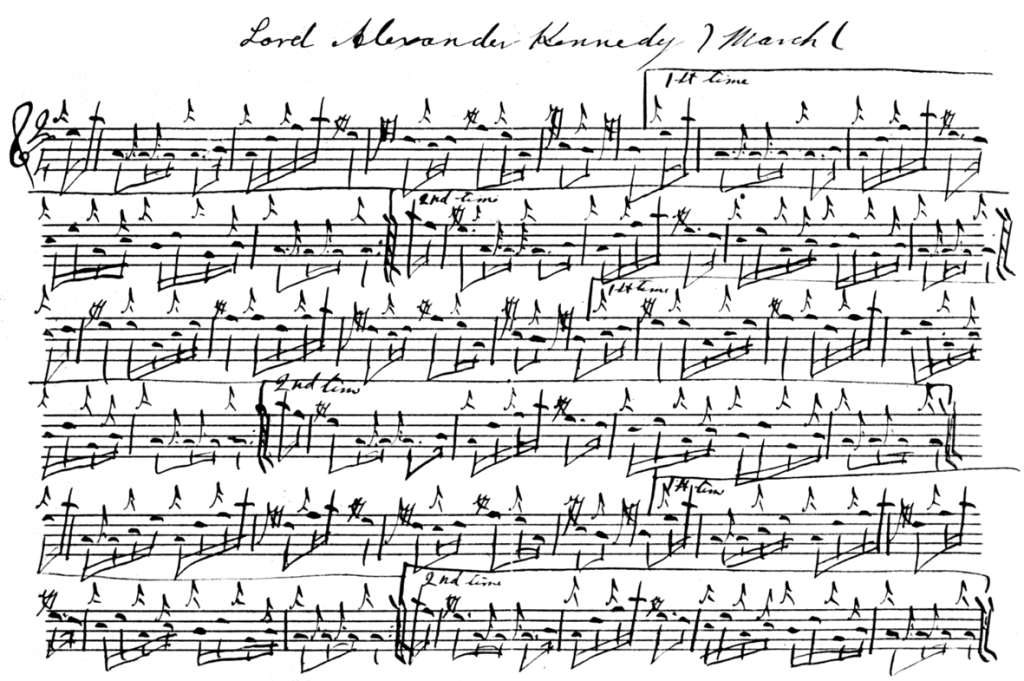
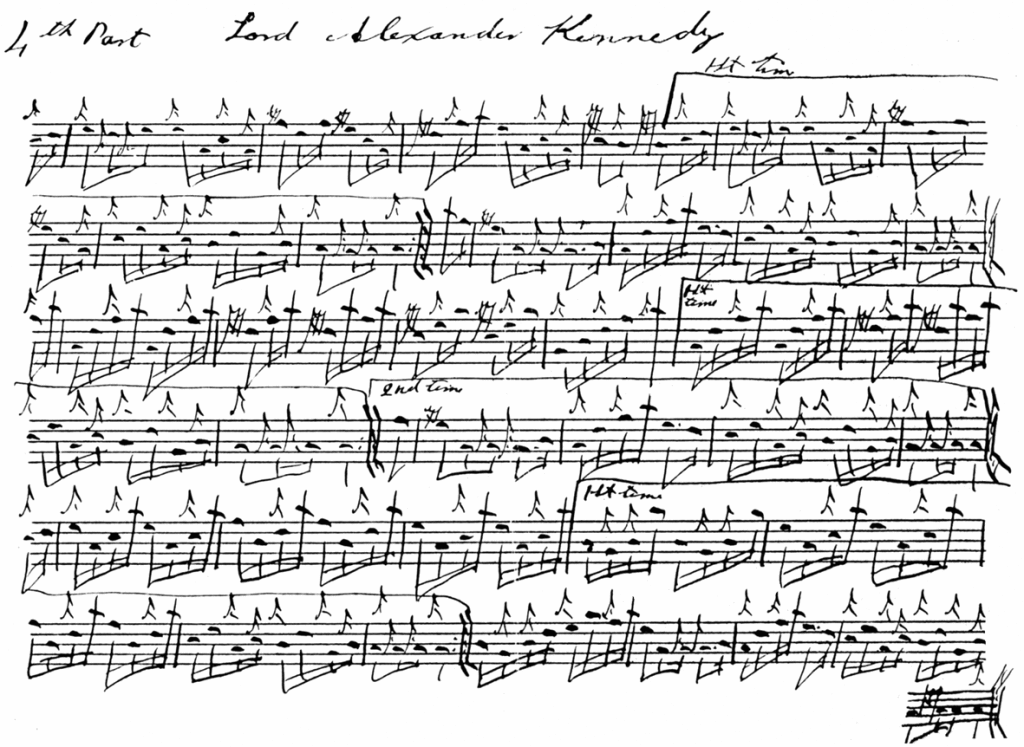 Study of the manuscript reveals the seldom heard ending of ‘G gracenote to low A – birl – G gracenote to low A’:
Study of the manuscript reveals the seldom heard ending of ‘G gracenote to low A – birl – G gracenote to low A’:
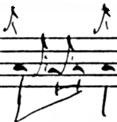 More often these days we hear the G gracenote to low A crotchet and then the birl. However, if we look closely at the final ending to the tune – clearly still in the writer’s hand – we see what appears to be an open taorluath and a low A crotchet to finish:
More often these days we hear the G gracenote to low A crotchet and then the birl. However, if we look closely at the final ending to the tune – clearly still in the writer’s hand – we see what appears to be an open taorluath and a low A crotchet to finish:
 Whether this was deliberate, a means of signing off the tune in distinctive fashion, or a change of mind, I don’t suppose we will ever know.
Whether this was deliberate, a means of signing off the tune in distinctive fashion, or a change of mind, I don’t suppose we will ever know.
As with some other music from this period, the tune is devoid of dots and cuts in the four-note semiquaver groupings. This is probably for ease of transcription, or possibly deference to the rounder, quickstep style that seems to have been prevalent in 2/4 competition march playing in the late 19th and early 20th centuries, interpretation yet to move away from the idea of the simpler two-parted tunes played up tempo and straight as a die.
Notice the strike on low A at the start of the third part – today it’s a birl. This device is also used at the start of the second times: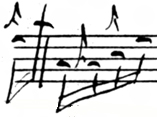 We have E grips (in the old pre-Willie Ross style) at the start of the fourth part, whereas today we commonly hear ‘E – cut C – back to E’.
We have E grips (in the old pre-Willie Ross style) at the start of the fourth part, whereas today we commonly hear ‘E – cut C – back to E’.
• More to follow.
















Robert, when talking with John D. years ago now on the subject of this very march, he info me the proper title was indeed ”Lord Alexander Kennedy’s march through the gardens of Gethsemane” which as we all know is in the Bible… Best wishes, Pipe Major Gordon Walker
Thanks for that confirmation Gordon, RW